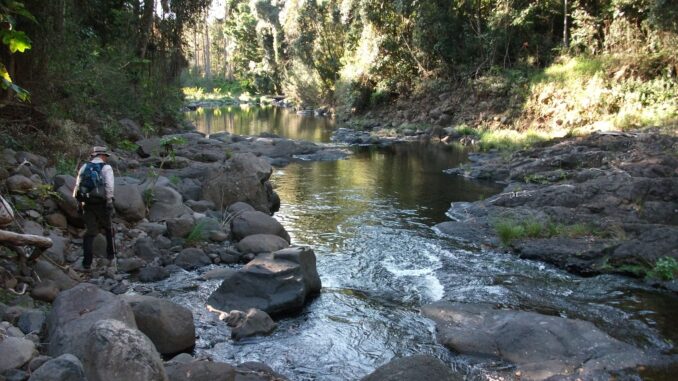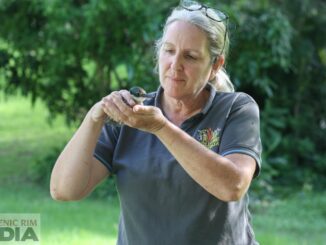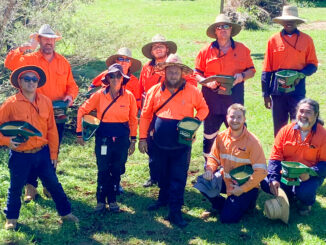
The first brown trout eggs transported to Australia were successfully hatched in the Plenty River in Tasmania in 1864.
In 1908 Sir Arthur Morgan introduced trout ova into a stream at Killarney and efforts were made for their introduction into the Tully River but these ventures met with limited success. In 1919 the Brisbane Field Naturalists Club proposed their introduction into Canungra Creek.
In 1938 Dr Guildford Montgomerie Davidson of Eagle Heights also advocated for their introduction into Canungra Creek as he believed the trout would provide an excellent table fish and attract tourists and fishermen. He contacted the Ballarat Fish Acclimatization Association and acquired 10000 brown trout eggs for hatching and the records of this organization show that the ova were duly dispatched.
Mr Romeo Lahey, a man instrumental to the creation of our National Parks, raised concerns regarding the detrimental effect the introduction would have on native species. In response Dr Davidson dispelled the notion that the hatchlings would be introduced into the National Park itself in that he believed the park would be inaccessible to the trout due to the terrain and waterfalls.
An expert from the Queensland Museum stated that the trout would not flourish due to the absence of swift running water fed by melted snow. They would certainly grow but not reach sexual maturity in the conditions available in the Canungra Creek. Although Dr Davidson pointed out that water temperatures in summer remained under 70 degrees F, it was surmised that this would be too warm.
In August 1938 Dr Davidson, with assistance from his son Mark and brothers George and Monty, placed the ova in hatching boxes, at the base of some rapids approximately 11km upstream from the township of Canungra. Dr Davidson reported a 100% hatching success and the hatchlings were fed on boiled bullocks liver until their release.
Mr Jim Davidson, a descendant of the Davidson family, was recently asked if he had any further information regarding the venture. His very words were, “the turtles of Canungra Creek certainly had a good feed!”
The twist in the “tail” of this story is that some years later a fisherman caught what he believed was a Cod in Canungra Creek. Locals assured him that it was indeed, a Brown Trout.
If you, or someone you know, is interested in the wide and wonderful history of our district, the Canungra and Districts Historical Association meets regularly and would like to welcome you as a member. If you have any interesting “tails” we would also love to hear from you.
With thanks to Mr Jim Davidson, Mrs Muriel Shephard of the Mount Tamborine Museum, Mr Des Libke and The Ballarat Fish Hatchery for their invaluable contributions to this article.





